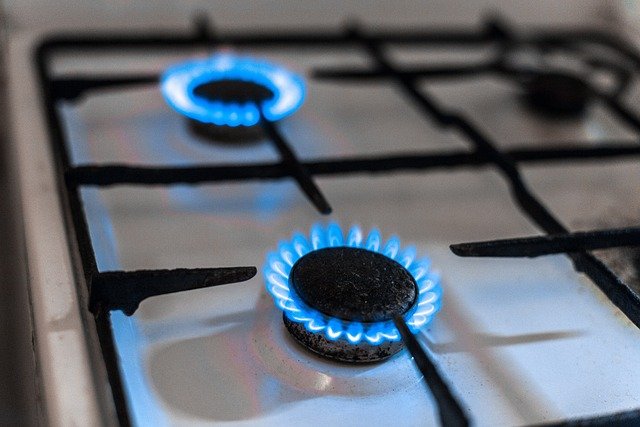Gas Stove Buying Guide
When selecting a gas stove for your kitchen, numerous factors need consideration beyond just the price tag. Gas cooking stoves remain popular choices for many homeowners due to their precise temperature control, immediate heat response, and cost-effectiveness over time. This comprehensive guide will help you navigate the key considerations when purchasing a gas stove, from understanding different types to evaluating important features that match your cooking needs and kitchen space.

Understanding Modern Kitchen Stoves
Modern kitchen stoves have evolved significantly in recent years, offering a range of technologies and designs that blend functionality with aesthetic appeal. Today’s gas cooking stoves often include features previously found only in professional kitchens, such as high-BTU burners, simmer settings, and specialized cooking zones. Many manufacturers now produce dual-fuel options that combine gas cooktops with electric ovens, giving homeowners the best of both worlds. Smart technology integration is another advancement, with some models offering app controls, temperature monitoring, and automated cooking programs that enhance convenience and precision.
Gas vs. Electric Stoves for Homes
While this guide focuses on gas stoves, understanding the differences between gas and electric options helps make an informed decision. Gas cooking stoves provide immediate heat control, allowing for quick temperature adjustments that many cooking techniques require. They continue working during power outages and generally cost less to operate over time. Electric stoves for homes offer different advantages, including easier cleaning with smooth cooktops, more consistent oven temperatures, and no open flames—making them safer in households with young children. Electric models also eliminate concerns about gas leaks or carbon monoxide and often provide more specialized functions like warming zones or bridge elements for oddly shaped cookware.
Key Features of Gas Cooking Stoves
When evaluating gas stoves, several important features determine both functionality and value. Burner configuration and BTU output significantly impact cooking versatility—look for a range of power settings from high-heat (15,000+ BTU) burners for searing to low-heat options (5,000 BTU) for simmering. Continuous grates allow for easy movement of pots between burners without lifting. Quality igniters ensure reliable lighting, while sealed burners prevent food from falling into the burner assembly. Modern gas stoves often include convection oven capabilities, which circulate hot air for more even baking and roasting. Self-cleaning functions, temperature probes, and specialized burners for wok cooking or griddle use are additional features worth considering based on your cooking habits.
Finding Affordable Stoves Without Compromising Quality
Budget considerations don’t necessarily mean sacrificing quality when purchasing a gas stove. Several strategies can help find affordable stoves that meet your needs. Consider floor models or previous year’s models, which retailers often discount to make room for newer inventory. Major appliance sales typically occur around holidays like Memorial Day, Labor Day, and Black Friday. Entry-level models from reputable manufacturers often share components with premium lines but omit luxury features. Focus on essential functions rather than paying for rarely-used features. Some manufacturers also offer good-quality budget lines designed specifically for price-conscious consumers that maintain core cooking performance while reducing costs on aesthetic features or specialized functions.
Installation Requirements and Safety Considerations
Proper installation of gas cooking stoves requires attention to safety details and building codes. Most installations require a certified professional to ensure gas lines are correctly connected and sealed. Adequate ventilation is crucial—a range hood that vents to the outside is highly recommended to remove cooking odors, smoke, and potentially harmful combustion products. Gas stoves need sufficient clearance from combustible materials, typically specified in the installation manual. Modern safety features to look for include automatic re-ignition if flames blow out, child safety locks on controls, and cool-touch door handles. Carbon monoxide detectors should be installed in any home with gas appliances as an additional safety measure.
Gas Stove Models and Price Comparison
When shopping for gas stoves, price ranges vary significantly based on features, brand reputation, and design. Understanding the market can help establish reasonable expectations for your budget.
| Model Type | Average Price Range | Key Features | Best For |
|---|---|---|---|
| Entry-Level Freestanding | $500-$800 | Basic 4-burner setup, limited features, standard oven | Budget-conscious buyers, basic cooking needs |
| Mid-Range Freestanding | $800-$1,500 | 5 burners, self-cleaning, convection oven | Regular home cooks, family kitchens |
| Premium Freestanding | $1,500-$3,000 | High-BTU burners, double ovens, smart features | Enthusiast home cooks, larger families |
| Slide-In Models | $1,200-$4,000 | Custom look, advanced features, better sealed | Kitchen remodels, design-conscious buyers |
| Professional-Grade | $3,000-$8,000+ | Commercial-level BTUs, specialized burners, heavy-duty construction | Serious home chefs, luxury kitchens |
Prices, rates, or cost estimates mentioned in this article are based on the latest available information but may change over time. Independent research is advised before making financial decisions.
Making Your Final Decision
After considering features, budget, and installation requirements, focus on aligning your final choice with your cooking habits and kitchen usage patterns. Visit showrooms to test the ergonomics of different models—check knob positions, oven door weight, and grate stability. Read professional and consumer reviews focusing specifically on reliability and performance over time rather than just initial impressions. Consider the warranty coverage and availability of service in your area, especially for higher-end models. Ultimately, the best gas stove balances quality construction, appropriate features for your cooking style, and value within your budget constraints.




